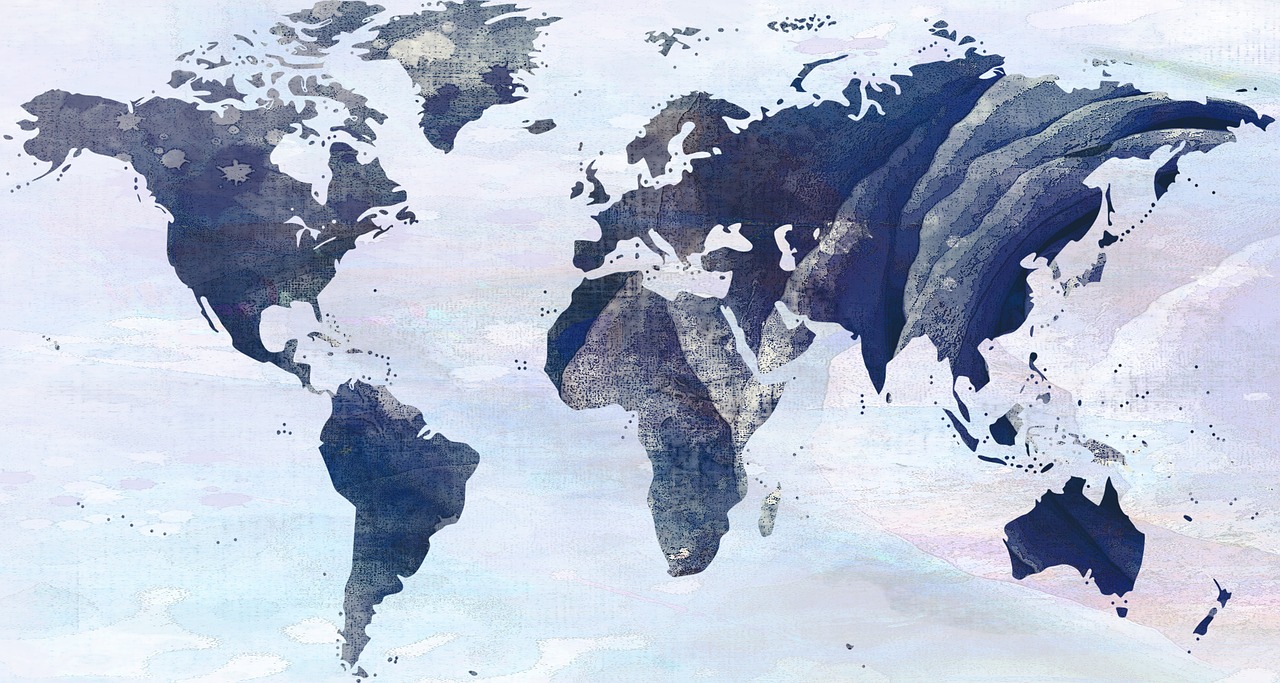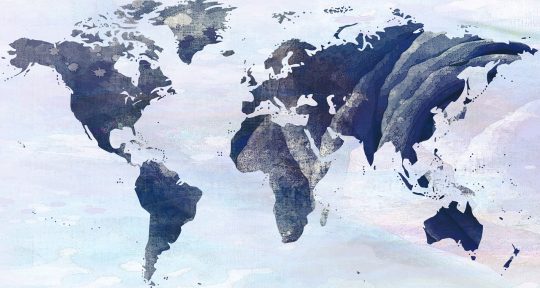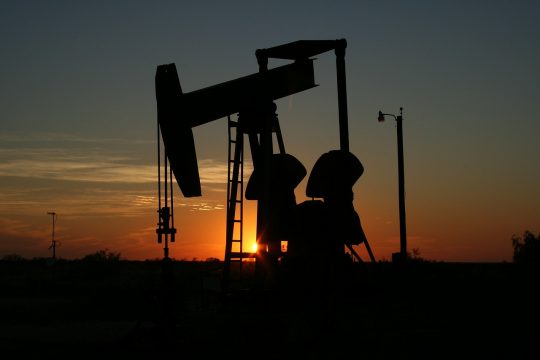 Global economic activity has already been slowing down dramatically, and the U.S. trade war with China is just going to make things worse. In so many ways, what we are witnessing in 2019 is quite reminiscent of what we witnessed as the last recession was beginning. Global exports are absolutely plummeting, auto sales are way down all over the globe, debt delinquencies are way up, and retailers are closing stores at a record pace. Even if the U.S. and China were getting along, things would be rough for the global economy in the months ahead, but a full-blown trade war between the two largest economies on the entire planet has the potential to be absolutely disastrous. We are truly in uncharted waters, and many believe that events are going to start accelerating very rapidly now.
Global economic activity has already been slowing down dramatically, and the U.S. trade war with China is just going to make things worse. In so many ways, what we are witnessing in 2019 is quite reminiscent of what we witnessed as the last recession was beginning. Global exports are absolutely plummeting, auto sales are way down all over the globe, debt delinquencies are way up, and retailers are closing stores at a record pace. Even if the U.S. and China were getting along, things would be rough for the global economy in the months ahead, but a full-blown trade war between the two largest economies on the entire planet has the potential to be absolutely disastrous. We are truly in uncharted waters, and many believe that events are going to start accelerating very rapidly now.
Even though I write about this stuff on a daily basis, I have been surprised by how poor the global economic numbers have been lately.
And remember, earlier this month the global media were convinced that the U.S. and China were about to finalize a trade deal. Now that negotiations have completely broken down, we should expect that these numbers will soon get even worse.
The following are 15 numbers that show how the global economy is currently performing…
#1 Global exports are absolutely crashing and have now fallen to the lowest level since 2009.
#2 U.S. auto dealers are dealing with a backlog of 4.2 million unsold vehicles.
#3 Auto sales in Europe have fallen for seven months in a row.
#4 Chinese auto sales fell a whopping 16.6 percent in the month of April.
#5 Overall, Chinese auto sales have now fallen for 11 months in a row. That is a new all-time record.
#6 U.S. auto loan delinquencies have reached the highest level since the last recession.
#7 U.S. credit card delinquencies have hit the highest level in eight years.
#8 In April, U.S. manufacturing activity unexpectedly declined 0.5 percent.
#9 Thanks to the trade war, the price of soybeans just dropped to the lowest level since 2008.
#10 Party City just announced that it will be closing 45 stores.
#11 Fred’s just announced that they will be closing 104 more stores.
#12 In April, U.S. retail sales declined for the second time in three months.
#13 According to the Atlanta Fed’s latest forecast, U.S. GDP growth is expected to fall to just 1.2 percent in the second quarter of 2019.
#14 According to a new study just released by the Urban Institute, 40 percent of all Americans “sometimes struggle to afford housing, utilities, food or health care”.
#15 Overall, 59 percent of all Americans are currently living paycheck to paycheck according to a survey that was just conducted by Charles Schwab.
Leaders from both the U.S. and China are trying to act tough and say the right things, but everyone knows that this trade war is going to hurt both countries.
Economic numbers from both nations have been troubling lately, and one expert that was just interviewed by CNBC says that “it could get a lot worse”…
Consumer and industrial activity in both the U.S. and China slowed in April, even before the world’s two biggest economies entered the latest phase of an escalating trade war that could take a bite out of global growth.
“The real message today is that both the economic data from the U.S. and China have disappointed. They’re like two boys in the sandbox that are spitting on each other, and it could get a lot worse,” said Marc Chandler, global market strategist at Bannockburn Global Forex.
In the short-term, it would greatly help if the U.S. and China could find a way to agree to a trade deal.
Unfortunately, the events of the past 48 hours have made that a lot less likely.
As I discussed yesterday, President Trump essentially took a sledgehammer to Chinese telecommunications giant Huawei. When the Commerce Department put Huawei on the “Entity List”, it essentially banned the company from buying much needed parts and components from U.S. firms. Some have described this as “the nuclear option”, and I think that description is quite accurate. In the end, this move is going to be absolutely devastating for Huawei.
Of course the Chinese are absolutely furious about this. Huawei is viewed with great national pride in China, and this move is considered to be a direct insult to Chinese national honor. Most Americans are not paying too much attention to the details of the trade war, but in China this is a really big deal and people are extremely angry. In fact, there has apparently been a run on “Donald Trump toilet brushes” in China in recent days because the Chinese are so angry.
Following my recent article about Huawei, a number of readers complained that I was being too soft on China. Of course that is not true at all. Long before Donald Trump ran for president, I was writing about how China was lying, cheating, stealing our technology and robbing us blind. I was literally begging for our politicians to stand up and do something, and I was thrilled when Trump started talking tough about China because I knew that he really understood these issues.
But I also want everyone to understand that trying to decouple from the Chinese economy would be extremely painful even in the most optimistic scenario. Our two economies have become extremely integrated, and we have become very dependent on China in many different ways. They buy our soybeans, they provide us with rare earth elements, and they own more than a trillion dollars of our debt. Looking at it from the Chinese perspective, they have countless ways that they can hurt us, and the angrier we make them the more likely it will be that they will lash out at us.
When negotiating with China, you need to be tough but you also need a lot of finesse. Taking a baseball bat and slamming it into their kneecaps is not going to work.
If we destroy our relationship with China, that is going to result in us going down a very dark path. Yes, China is an evil empire that has no respect for human rights at all. There is no freedom of speech in China, over the past year they have been shutting down lots of churches and burning lots of Bibles, and they have been systematically throwing members of other religious minorities into concentration camps.
So I don’t have any sympathy for the communist Chinese government at all. I just want all of you to understand that they are a very dangerous adversary, and a protracted trade war could be truly disastrous for the entire global economy.
 About the author: Michael Snyder is a nationally-syndicated writer, media personality and political activist. He is the author of four books including Get Prepared Now, The Beginning Of The End and Living A Life That Really Matters. His articles are originally published on The Economic Collapse Blog, End Of The American Dream and The Most Important News. From there, his articles are republished on dozens of other prominent websites. If you would like to republish his articles, please feel free to do so. The more people that see this information the better, and we need to wake more people up while there is still time.
About the author: Michael Snyder is a nationally-syndicated writer, media personality and political activist. He is the author of four books including Get Prepared Now, The Beginning Of The End and Living A Life That Really Matters. His articles are originally published on The Economic Collapse Blog, End Of The American Dream and The Most Important News. From there, his articles are republished on dozens of other prominent websites. If you would like to republish his articles, please feel free to do so. The more people that see this information the better, and we need to wake more people up while there is still time.














